#Realme X50 Pro review
Explore tagged Tumblr posts
Text
Realme X50 Pro 5G Phone Price, Specs and Reviews
Realme X50 Pro 5G Mobile with 6.44 inch Display, 8GB RAM, 128GB Storage, Quad 64 MP Rear Camera. Realme X50 Pro Price in India, Specs and Reviews
0 notes
Link
Realme X50 Pro features and Review. Realme X50 Pro 5G is a Very Old Smartphone by realme. It is launched on 24 Feb 2020 in India with a starting price of 38,999 and Goes with higher variant it costs 41,999. It comes with a 5G processor, i.e., snapdragon 865 SoC with 8GB or 12 GB of Ram.
1 note
·
View note
Link
2 notes
·
View notes
Video
youtube
Comparison of Specs,Features review,Price and camera samples of Vivo X50 Pro vs Realme X50 Pro 5G Smartphones https://digitaltechnologynews.com/ Facebook: https://www.facebook.com/TechNewsTrends/ Instagram: https://www.instagram.com/techspacereview/ *Disclaimer: The scoring is based on numerical specs only and don't include features of cameras,usability,speed or others. All of them are calculated (own score system), not interpreted and do not reflects which phone are better on these aspects. Vivo X50 Pro #VivoX50Pro #Vivo #X50Pro Realme X50 Pro 5G More Here: https://digitaltechnologynews.com/ Tech news
1 note
·
View note
Text
Realme offers a cost-effective killer, which is the protagonist of this review Realme X50 Pro 5G. This is the first Snapdragon 865 flagship released by Realme in less than a year from the return of India to China. The price starts from 3599 yuan, and the entire series is equipped with a 65W gallium nitride charger as standard. “It looks similar, but the two are indeed in completely different positions.
The previous Realme X50 was a mid-range 5G sub-flagship, and this time the Realme X50 Pro is the beginning of Realme’s flagship in 2020, and its importance is self-evident. So how does it actually perform? Next, let’s enter this realme X50 Pro review.
Design & Appearance
Sandwich structures with double-sided glass and medium-frame metal are not uncommon at present. The realme X50 Pro 5G follows the design ideas of the realme x50 5G and makes a look that almost everyone can accept. This means that from a distance, the X50 Pro 5G does not look much different from the realme 5 Pro.
In the author’s experience, the most obvious change I can feel is that the grip of the realme X50 Pro 5G is much better than the previous realme X50 5G. This is because the back process is upgraded and the back cover uses a more expensive AG coating. The matte touch has less damping, making the back of the phone smooth and delicate. And it will not leave fingerprints easily during use, and keep the back clean at all times.
The realme X50 Pro 5G’s body is very round and there are almost no edges and corners. After the 8.9mm body has undergone a round transition, it is easy to ignore the thickness on the touch with a one-handed and two-handed grip, and the curved glass on the back fits the handgrip.
It is worth mentioning that compared to the X50, the X50 Pro also has an obvious change, which is the return of the screen fingerprint unlocking, eliminating the fingerprint recognition area that was “homestay” on the power button, and it is a step up in aesthetics.
What makes the realme X50 Pro 5G recognizable is the two new colors additions-red rust and moss. The inspiration is said to be from the Morandi color system. For the first time, the mature and restrained expression of realme is shown. , Low-profile matte, compared with the high-saturation flamboyant color matching in the past, it is much more durable.
These color changes also depend on the reflection of light on the mirror glass, which looks quite deep, which is the flagship temperament. The X50 Pro is equipped with a 6.44-inch Samsung Super AMOLED screen, E3 light-emitting material, and a maximum excitation brightness of 1,000 nits. This high-quality screen is regarded as the flagship standard this year.
Refresh rate
It also comes standard with a refresh rate of 90Hz. The most direct experience is smoothness, reduced visual lag when sliding, reduced text smear when reading, and very easy operation. It also has a touch sampling rate of 180Hz. The touch sampling rate affects the touch sensitivity of the screen. The higher the touch sampling rate, the higher the touch sensitivity of the screen.
If you are more concerned about realme mobile phones, you may find that why the real self X50 is equipped with a 120Hz high refresh rate screen, but when the Pro version refresh rate is changed to 90Hz? The reason is explained in detail in the experience section. The desktop default wallpaper just obscures the front dual camera opening in the upper left corner. If you change the interface on a white background, you can see the opening.
Thanks to the replacement of the screen from the X50 LCD to the OLED material, the area of the double openings has been reduced. Naturally, the effect on the screen’s integrated look and feel has been much lower than the previous generation. When playing a game or watching a video, you can turn the direction so that the game/video control buttons avoid this area. There is no need to cut the screen to a 16: 9 ratio display.
The bottom of the phone has a USB-C port, a microphone, a main speaker, and a dual SIM card slot. There is a microphone on the top.
This time the Realme X50 Pro does not retain the 3.5mm headphone jack. On the one hand, it reduces the openings, and on the other hand, it allows more space inside the fuselage to accommodate other more important components. We must know that the Realme X50 Pro 5G machine The body size is smaller than the X50, which means that the space pressure will be greater than the latter.
Realme X50 Pro Screen
We just raised a question that realme followers may have in the external viewing analysis section. The real self X50 is equipped with a high refresh rate of 120Hz. Why does the Pro version become 90Hz?
The reason for this is not difficult to explain. The real self X50 and real self X50 Pro have completely different screen materials: the X50 uses an LCD screen, and the X50 Pro uses an OLED screen.
Especially in low-temperature conditions, whether it is the iPhone 11 up to nearly 6000 yuan or a low-end entry phone down to several hundred yuan, any LCD screen is relatively prone to smear, which is because of the screen response time Long, it is not a real stutter, but relatively slow response.
Here we must first talk about the response time of the LCD screen: the speed at which each pixel of the liquid crystal display responds to the input signal, that is, the time required for the pixel to change from dark to bright or bright to dark, that is, the liquid crystal molecules rotate and return to the original position. The time needed.
LED
At the same time, it is also necessary to understand the principle of the LCD screen: under the action of the electric field, the arrangement direction of the liquid crystal molecules is changed to change the transmittance of the external light source, complete the electrical-optical conversion, and then use the three primary colors of R, G, and B. The different excitations of the signal pass through the three primary color filter films of red, green, and blue to complete the color reproduction of time domain and space domain.
In other words, as long as the LCD screen uses liquid crystal technology, liquid crystal molecules cannot be deflected. The time required from receiving the driver chip command to changing the state can only be as fast as possible.
The OLED screen’s light-emitting principle is different. It realizes self-emission by driving the organic thin-film itself by electric current. Technically, independent pixels can be turned on and off, and the light and dark changes of the pixels can be directly controlled, which avoids the flow of liquid crystal molecules’ deflection. Therefore, the response speed is far better than that of LEDs, and almost no afterimage can be seen by the naked eye.
Therefore, in the author ’s actual experience, the real-life X50 at the refresh rate of 120 Hz and the real-life X50 Pro at the refresh rate of 90 Hz can hardly see the smear phenomenon, but the sliding speed of the X50 will be faster, and the overall visual performance no big difference.
In addition, the real-world X50 Pro’s screen color adjustment is more restrained. It only provides two options: “P3” and “sRG”. It does not provide a vivid but unrealistic “bright” mode. In other words, the X50 Pro does not show strong display effects due to the use of AMOLED screens, and the color adjustment tendency is as restrained as its back.
Example of a 90Hz screen versus a 60Hz screen
Finally, let’s intuitively feel the smoothness of the high refresh rate screen compared to the traditional 60Hz refresh rate screen.
5G experience
We have already briefly introduced the appearance part. The body size of the X50 Pro is even smaller than that of the X50. This also means that the machine is facing tighter space pressure for 5G function implementation. After all, 5G is not a plug A simple thing that an X55 baseband chip can accomplish.
Realme X50 Pro also has to deal with extremely complicated antenna layout and RF deployment. Realme X50 Pro 5G also chose a more difficult solution to challenge. Like the realme X50, this game is not missing in frequency band or mode, including n1, n3, n41, n78, and n79.
This means that whether it is domestic or in most parts of the world, you do n’t need to worry about the “mobile phone does not support this band” when holding the real X50 Pro. For this reason, the X50 Pro has paid a very high price. Realme designed 12 antennas for this phone.
Speed
For the heat dissipation problem faced by a more compact body, the realme X50 Pro 5G has a complete set of heat dissipation mechanisms, which is officially called a five-dimensional ice-cooled heat dissipation Pro. , Heat dissipation silicone grease and other multiple heat dissipation materials. Among them, the area of VC liquid-cooled soaking copper plate is as high as 1821 mm2. Compared with the previous generation heat pipe, the area is increased by 339%, which can cover the core heat source 100%, significantly reduce the temperature, and greatly improve the heat dissipation capacity.
These are all necessary guarantees for the real X50 Pro 5G network experience. Next, in the area covered by the 5G signal, we use the mainstream test tool Speed Test for speed measurement under the 5G network.
The realme X50 Pro 5G network speed is currently stable at around 487Mbps near the author’s home. This rate is due to the fact that I got early engineering machines and the operator’s network was not stable. Even so, the speed experience of the X50 Pro is still much faster than 4G. In particular, compared with the 24.9 Mbps downlink rate of ordinary 4G networks, 5G networks have almost increased to 20 times the former.
Not only that, but the latency under 5G networks is also lower.
As the current 5G networks of the three major operators have not yet achieved large-scale full coverage like 4G networks, there must be some 5G network signal blind spots (such as in underground parking lots and elevators), and 5G and 4G switching scenarios will be encountered. Realme X50 Pro provides Smart 5G technology to solve the network stall that may occur during the 4G and 5G mutual switching process.
The most obvious performance is that when the 5G signal is weaker than 4G, the real X50 Pro will automatically switch back to 4G standby. At the same time, the 5G network can also speed up the network when the Wi-Fi signal is not good. After enabling the dual-channel acceleration of 5G and Wi-Fi, it can provide “dual insurance” for daily use, especially mobile games. Features have covered mainstream applications.
Hardware & Performance
Realme’s fastness is not just related to high refresh rate screens. I can persuade you to buy a realme X50 Pro. The main reason is the core hardware configuration based on the starting price of 3599 yuan. The X50 Pro is equipped with the Qualcomm Snapdragon 865 mobile platform. The most powerful mobile SoC.
At the same time, the Real X50 Pro National Bank Edition also provides a large memory starting with 8GB RAM, up to 12GB, and the specifications also use the top LPDDR 5 of the current Android camp. To match it is 128GB or 256GB of dual-channel UFS 3.0 storage.
These top-level hardware bases make this phone have the top speed and high performance of the Android camp. With the freshly released realme UI, it can be said that the X50 Pro is currently the fastest and smoothest mobile phone under realme.
Master Lu
Master Lu can evaluate and compare the five core hardwares of CPU, GPU, RAM, storage, and display. It is more suitable for ordinary white users to understand mobile phone related information.
CPU
Compared with the Snapdragon 855 Plus, the top pillar of the Qualcomm camp in 19 years, the Snapdragon 865 powered by the X50 Pro is more direct on the CPU.
Specifically, the CPU core used by the Snapdragon 865 is the same as the Snapdragon 855 Plus with a 1 + 3 + 4 architecture, with frequencies of 2.84GHz, 2.42Ghz, and 1.80GHz, and the cache capacity has not changed. With the Coterx-A77 architecture, the L3 cache has doubled to 4MB, and the four small cores are still the Cortex-A55 architecture, with a frequency of 1.8GHz.
Although the core frequency and L2 cache have not changed, compared with the Snapdragon 855 Plus based on the Cortex-A76 core improvement, Qualcomm’s main change on the Snapdragon 865 is to use the ARM Cortex-A77 architecture directly on the CPU core.
In the GeekBench5 test, the Snapdragon 865 used by the X50 Pro benefited from the new A77 architecture. Both the single-core and multi-core performance tests have achieved very good results. Among them, the single-core is 18 times ahead of the Snapdragon 855 Plus. %, Leading 19% on multicore.
GPU
Next, we look at the changes in the GPU. Adreno 630/640 GPUs are 2-core GPUs, each GPU core has 256 and 384 ALU units, and the performance of Adreno 650 has achieved a 50% improvement, which means that it may Is composed of three 256-ALU cores or two 512-ALU cores.
In terms of texture filling, the previous generation of Adreno 640 has performed well. Each core doubled from 12 groups of TMU units to 24 groups of TMU units, for a total of 48 groups of TMU units. This also makes the texture fill rate: the pixel fill rate reaches a rare 3: 1 ratio. The Adreno 650 GPU brings a 50% improvement in pixel processing performance over the previous generation, and now its pixel fill rate performance is on par with ARM’s Mali GPU.
Qualcomm has pointed out that the Adreno 650 GPU has improved performance by an average of 25% in different tests and loads. It should be noted that Qualcomm clearly indicates that the performance increase will be higher in some loads, such as the high load test Aztec Ruins in GFXBench. At this time, there may be a performance improvement of more than 25%.
Dual-channel UFS 3.0
Thanks to the dual-channel UFS 3.0, in the AndroBench storage test, the sequential reading speed of the Real Me X50 Pro was 1715.51MB / s and the sequential writing speed was 685.41MB / s. The random read speed is 238.74MB / s and the random write speed is 233.93MB / s.
The test data in each sub-item is much higher than the previous generation UFS 2.1. Even if you ignore the paper parameters, you can feel the faster game loading brought by the Snapdragon 865 + LPDDR 5+ dual-channel UFS 3.0. Speed and application installation speed.
It is worth mentioning that official news claims that the realme X50 Pro uses UFS 3.0 + Turbo Write + HPB flash technology. Specifically, the Realme X50 Pro uses Samsung ’s standard UFS 3.0 + Turbo Write technology. Which is technically consistent with the JEDEC standard UFS 3.1 (UFS3.0 + Write Booster), which maximizes sequential writing. In the performance speed, only the name is different. The X50 Pro has added HPB technology to the entire system. Which can further improve the random read performance after long-term use?
Antutu
Antutu introduces mobile / tablet hardware performance evaluation tools. Which can comprehensively inspect the performance of various aspects of the device? Including user experience, and perform visual rankings. Support multiple mainstream platforms, running points can be compared across platforms. AnTuTu’s running score will provide a total score and multiple sub-item scores.
Realme X50 Pro Cameras
In previous years, dual- and triple-cameras were rare. Now four-cameras will almost become the standard for mobile phones. The main purpose is to enrich the photography scene and bring a more comprehensive photography experience through multiple cameras.
The rear side of the Realme X50 Pro uses a four-camera combination of 64MP main cameras + 12MP pixels 2x telephoto lens + 119 ° super wide-angle lens + black and white portrait lens.
The main camera is our old friend Samsung ISOCELL GW1. This sensor has a 1 / 1.72-inch photosensitive area and can take 64MP effective pixel photos. It is an evolutionary upgrade of Samsung GM1. And it has more pixels (from 47MP to 64MP). ), Due to Samsung ’s DTI pixel segmentation and other technologies. The overall signal-to-noise performance and low-light performance will also be improved.
0.6x
1x
The 64-megapixel Samsung GW1 main camera also supports QuadBayer pixel 4-in-1 technology. A single pixel can reach 1.6 μm, which brings better resolution and low-light performance. The ultra-wide-angle lens in the four-shot can capture ultra-wide-angle images of 119°. It also supports 3cm macro photography; the telephoto lens supports up to 2x optical zoom. 5x hybrid zoom, and 20x digital zoom; as for black and white portrait lenses. They can also play a role in shooting portraits.
It is worth mentioning that in the shooting experience. The author found that when the realme X50 Pro 5G is in poor light. The main camera with a larger aperture will be used to crop the image to obtain a zoom proof. Only if the ambient brightness is acceptable, the mobile phone ’s telephoto head will be called.
Battery
Not only does the 90Hz screen make brushing the phone visually fast, but the Snapdragon 865 + LPDDR 5+ dual-channel UFS 3.0 is fast. This time the 65W flash charge used by the X50 Pro makes charging faster. 35 minutes full. This is currently the fastest 65W charging record in 5G mobile phones.
The X50 Pro is equipped with a 65W flash charge, with a maximum current of 6.5A. And the most important thing is that this machine comes standard with a 65W gallium nitride charger-this charger currently costs at least 149 yuan in China. It is still very sincere.
In terms of charging speed, realme said that the X50 Pro takes only 35 minutes from 0 to 100% full. Which saves half of the charging time compared to some 30W flagship phones on the market. The reason why it is so fast is that the battery capacity is 4200mAh. Which is not too high. Secondly. SuperDart technology further improves the algorithm. The charging power is more balanced, and the trickle charging speed is greatly improved.
Among the previous smartphones. The fastest from 0 to 100% full charge is OPPO’s Reno Ace, which can be filled with a 4000mAh battery in 28 minutes. But this is a mobile phone last year, and the battery capacity is relatively small.
With such a fast charge, the X50 Pro can achieve 100 minutes of movie playback. 4 hours of phone calls, and 40 songs of battery life after 3 minutes of charging. 100 minutes is almost the time of a movie.
Online video battery life
I use the Bilibili client to play online barrage videos, 20% volume, 70% brightness, turn on the GPS switch. And keep QQ and WeChat in the background. Use a WiFi network, and the data network is in 5G state, starting from 100% power. And after 1 hour, the remaining power is 92%. Power consumption is 8%.
Game battery life
Keep QQ and WeChat in the background, turn on GPS, start from 100% power, and after 1 hour. The remaining power is 85%. The power consumption is 15%, but it should be noted that the picture quality is HDR and the frame number is set to ultra-high. If adjusted to the limit frame rate, battery life may be further reduced.
Realme X50 Pro Verdict
If in 2019, if you ask me if I will consider buying a 5G flagship. And seeing a crowd of 5G flagships that have almost doubled in price. And are relatively unchanged from 4G phones except for the network, I will shake my head.
However, let me look at this problem again now, and I will be excited by 5G flagships like realme X50 Pro. Because even without considering the 5G network. Its high refresh rate screen. Top performance and experience have reached a level that is very different from last year’s 4G mobile phone. Reaching the level that a high-end flagship should have. Under this premise, the 5G network is integrated. Characteristics have a very strong appeal.
Read Also: Redmi Note 9 Pro Hands-on Review: 2020 Mid-Range Beast
In the context of increasing sales without increasing prices starting from 3599 yuan, it is difficult for people with related needs to refuse early adopters of 5G flagships. From its selling price, we can also see that as a realme with strong Internet brand attributes and positioning close to young people, it continues to focus on the less expensive strategy.
Of course, at the same time. Realme is also constantly approaching the top flagship products of giant manufacturers. On the realme X50 Pro, we can see the Snapdragon 865 top mobile platform. 90Hz high refresh rate Samsung AMOLED screen. 65W SuperDart super flash charge ( Or even give away gallium nitride chargers) and many other flagships.
Although the Realme X50 Pro 5G looks like an upgraded version of the Realme X50 in the name. The two are two completely different products in terms of experience. The convergence between the two is only a product idea without shortcomings and no mistakes. It can be said that the realme X50 Pro is a high-end “bucket machine” in the Android flagship camp.
Realme X50 Pro Review: Is This 5G Phone Worth For 2020 Realme offers a cost-effective killer, which is the protagonist of this review Realme X50 Pro 5G…
#Realme#Realme X50#Realme X50 Pro#Realme X50 Pro 5G#Realme X50 Pro buy#Realme X50 Pro Deal#Realme X50 Pro Features#Realme X50 Pro price#Realme X50 Pro review#Realme X50 Pro Sale#Realme X50 Pro specs#Realme X50 Pro Test#Realme X50 Pro Unboxing
0 notes
Text
Realme X50 Pro 5G First Impressions
Realme X50 Pro 5G First Impressions
Realme is off to an aggressive start in 2020. After the recent launch of the Realme C3 (Review) in the budget space, the company is now setting its sights on the premium tier with the new X50 Pro. This phone was all set to debut at the Mobile World Congress trade show but now that it has been cancelled, Realme decided to debut the phone in India. The Realme X50 Pro 5G is the company’s most…

View On WordPress
0 notes
Text
OnePlus 8 Pro Review: Slickest Android of 2020
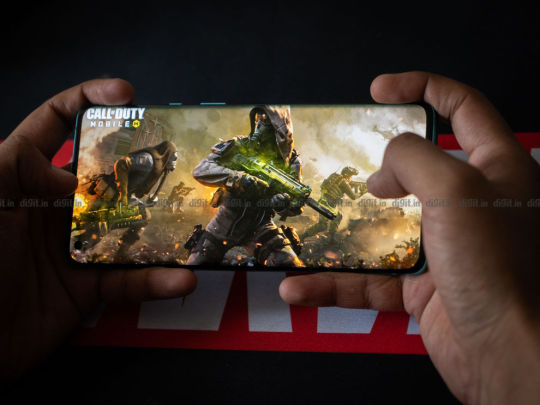
While there have been a handful of Snapdragon 865-powered smartphones, the OnePlus 8 Pro is easily the most anticipated one. It’s the company’s first true flagship and OnePlus has finally relented to offer things like wireless charging and an official IP rating, apart from the bells and whistles you’d expect from a top of the line premium flagship. After a week of using the phone as a daily driver, the phone is clearly good at what it does, but it’s not as flawless as OnePlus claims it to be, especially when you consider other options in this segment. Here’s our review of the OnePlus 8 Pro —
OnePlus 8 Pro performance
The OnePlus 8 Pro variant we received for review comes with 8GB LPDDR5 RAM and 128GB UFS 3.0 storage. Powering it all is the Snapdragon 865 SoC. Which basically guarantees the 5G part. Yet, despite being a key partner for Qualcomm, OnePlus has interestingly skipped on a lot of features that comes with the chipset by default. That includes features like being able to shoot HDR videos, portrait videos, unlimited slow-motion recording, HDR gaming, 8K videos and a lot more. Then again, OnePlus did include things like live captions, audio zoom when you’re zooming in on a video, a 10-bit HDR display and of course, the full suite of 5G support. If you are looking for a flagship that includes more of the Snapdragon 865 features, the Mi 10 and the Realme X50 Pro are good options to consider. Benchmark analysis The Qualcomm Snapdragon 865 flagship chipset is the primary driver of performance in this smartphone, combined with a 120Hz display and the OxygenOS 10 software. These three things come together to offer a fast, stable experience which is very much worth the premium you spend for this phone. Yet, it’s the same hardware that keeps the OnePlus 8 Pro from achieving the highest scores in benchmark apps —
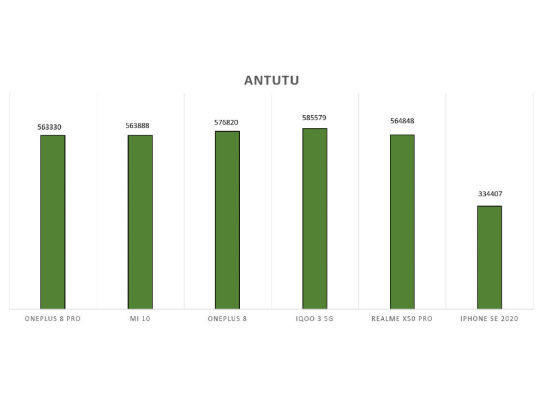
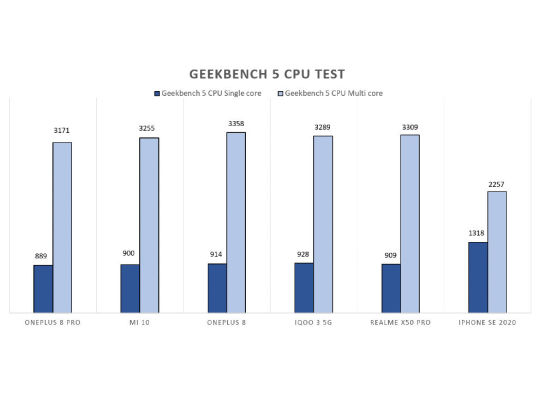

It’s surprising to see a Rs 34,999-priced Snapdragon 865-powered smartphone to outshine this year’s OnePlus flagship on benchmarks, but that’s just what we saw. And it’s not just the iQOO 3 5G we’re talking. Every single flagship Android phone we’ve tested this year has beaten the OnePlus 8 Pro on benchmark, although, the difference is perfectly within the margin of variance we expect in scores. Over the OnePlus 7 Pro last year, we saw around 15-18% boost in performance, which is good enough since there’s no app or game that’s specially built for this chipset, neither does it improve the experience in a noticeable way, as compared to the OnePlus 7T Pro that launched last year. Real world usage

What does improve the experience is the 120Hz refresh rate on the phone. It feels far too smooth when compared against last year’s OnePlus 7 Pro, which again felt the smoothest back when it launched. The in-display fingerprint sensor is fast and accurate enough to unlock the phone in the first attempt, but more often I found the face unlock engaging even before my finger was scanned. A single scroll can browse past a lot more elements on the screen without looking stuttering and blurring. The haptic feedback is also strong and concentrated and typing on this phone is slightly better than the other Snapdragon 865-flagships. The UI also feels far more responsive, and thanks to the gesture navigation, switching between apps takes less than a second. However, there are chinks in this otherwise powerful armour. The OnePlus 8 Pro kept freezing for a few seconds every time my Instagram Stories feed would encounter a video, and sometimes even when I was scrolling down a recipe online. Unfreezing required a quick lock-unlock, but the issue persists even as I am writing the review. Nevertheless, we’ve reached out to OnePlus about it, and they have acknowledged it. So safe to say, a patch is incoming. The phone also heated up quite fast when used outdoors. I was out taking camera samples in a hot afternoon in Delhi and the phone heated to well over 50 degrees prompting it to issue a temperature warning. It didn’t shut down though, and quickly gave me a ‘temperature has been restored’ message right after I entered my building. In comparison, I have been taking samples from all other flagship Android phones this year out in the afternoon and this is really the first time I came across the phone heating just by using the camera out in the open. Can this be fixed with a software update? Unlikely. Gaming performance
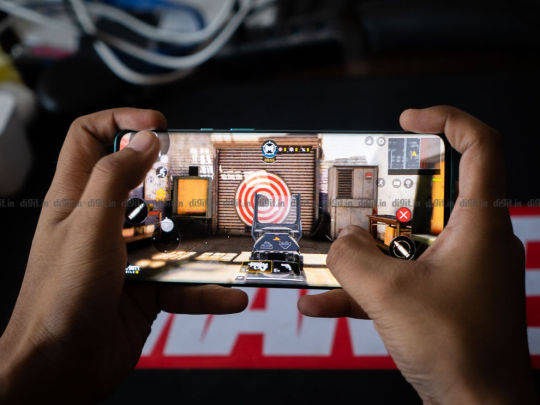
Thankfully, I never saw the overheating sign while gaming. The OnePlus 8 Pro responds really well to games, even when you are not using the Fnatic Mode that’s tuned to improve performance and keep away distractions. Yet, despite all the games we played, nothing really made the most of the high refresh rate display to run at 120FPS. But the nicely tuned display did deliver some fantastic visuals regardless. Except for Fortnite which ran at 90FPS but at low graphics, everything else was clocked to 60 FPS. Unfortunately, Fortnite didn’t allow us to clock performance using GameBench as it doesn’t support Android’s Developer Mode and USB Debugging.
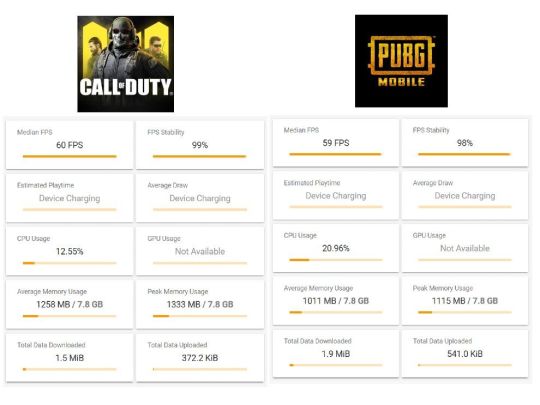

CPU frequency distribution while gaming on the OnePlus 8 Pro We did play our usual rounds of COD: Mobile and PUBG Mobile. The former clocked a stable 60 FPS with 99% stability while the latter delivered 59 FPS at 98% stability. The numbers are good enough for smooth gameplay. The touch response is good for a quick scope using a sniper on COD: Mobile’s multiplayer. The 2.86GHz prime core was regularly engaged while playing PUBG Mobile (despite which it couldn’t achieve 100% stability) while the CPU usage was around 30% at its peak. On COD: Mobile, the prime core hit 2.6GHz only twice and that too when my player died and had to respawn. There’s definitely room for improvement here, and OnePlus can do it with further tuning in a future update. Having said that, OnePlus devices have been popular enough among gamers for the company to seriously consider allowing more granular tuning of the CPU and GPU that we have seen on phones like the Asus ROG Phone II.
Software performance

I was using the Mi 10 before I started to review the OnePlus 8 Pro, and it’s really the OxygenOS 10 UI that sets the phone apart from all other Android smartphones. It’s just as slick and fast as stock Android, but comes with a lot more features. In front of skins like MIUI and RealmeUI, OxygenOS is far more refined and it just blends in with your life. There are no ads or bloatware that distracted me from the task at hand. And the UI elements, combined with the high refresh rate of the display feels far more responsive than anything else I’ve reviewed this year. The good thing is, OnePlus emulates the same experience on the OnePlus 8 and even the older OnePlus phones that are still receiving regular updates with new features every 1-2 months. I’ve also come to realise that using a OnePlus right when it launches will feel like a work in progress. The company has a penchant of using software builds riddled with bugs at launch, and there are a handful of them in the OxygenOS 10.5 version my unit came loaded with. The dark mode would invert colours of black and white pictures, especially on WhatsApp, while the live wallpaper app I was using (Metropolis. You guys should try it) had to reload the wallpaper after I would use an app or play a game for a long time. There’s also no always-on display. We’re at the cutting edge of AMOLED display technology here, but OnePlus still hasn’t figured out how to make an always-on display work. Remember, it used to be there until one random update took it away. And it never came back. The phone still shows incoming notifications discreetly on the screen, but you will have to pick it up or tap twice on the panel to surface it. But I did like the Google Assistant ambient mode the phone goes into when charging. It’s hella useful with all the information I need, right on the lockscreen.
OnePlus 8 Pro camera performance

The OnePlus 8 Pro features not one, but two 48MP cameras this time in a quad camera stack. There’s a primary 1/1.3” 48MP Sony IMX689 sensor that’s slightly larger than the 1/2” footprint of the previous generation. Then there’s another 1/2” 48MP IMX586 that’s used in the ultrawide lens which is what sets this phone apart from others in this segment. The quad camera stack also includes an 8MP telephoto lens with 3X hybrid zoom and a colour filter lens which was defunct in our review unit owing to the ongoing controversies around how it can see through plastic, and even clothes. What was OnePlus even thinking? During the course of using the phone, I was mostly staying indoors and the most of the outdoor samples you will see in this review are a result of quick grocery runs or taken while I was out walking my dog. But it still gave us a good idea as to how this flagship camera performs. We have uploaded these photos to our Flickr gallery in their original resolution. The samples below have been resized for the web. 48MP Primary camera with f/1.78 aperture and OIS Among all other OnePlus cameras we have tested over the years, this one gets the closest to beating the premium flagships in terms of the details and sharpness it produces when the light is optimum. Tricky situations don't perturb the camera all that much either and we managed a few good shots to show for it. The dynamic range is also quite good with photos balancing out the highlights and shadows to appear far more natural, than say the saturated output from the 108MP camera on the Mi 10. Samples below —
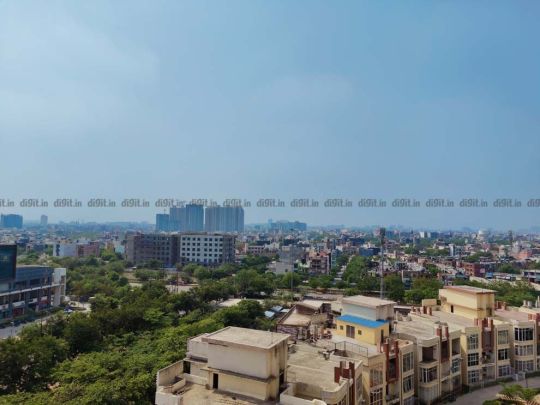

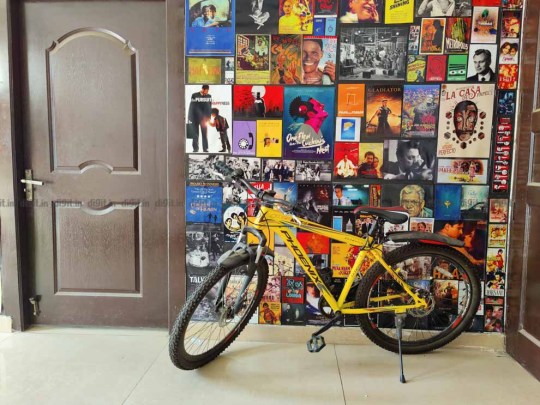
What did irk me was a tendency for the camera to highlight blue tones a lot more in the photos, and in some cases, noisy details, especially for indoor shots. The camera also has a smaller plane of focus which became apparent when I was trying to take photos of my culinary adventures, but it’s not the first time I’ve seen this issue. It’s present in almost all large-format high-res camera sensors, and there are reasons to believe that this is an inherent issue of the large sensor size and the lens arrangement inside the phone. Here’s an example —
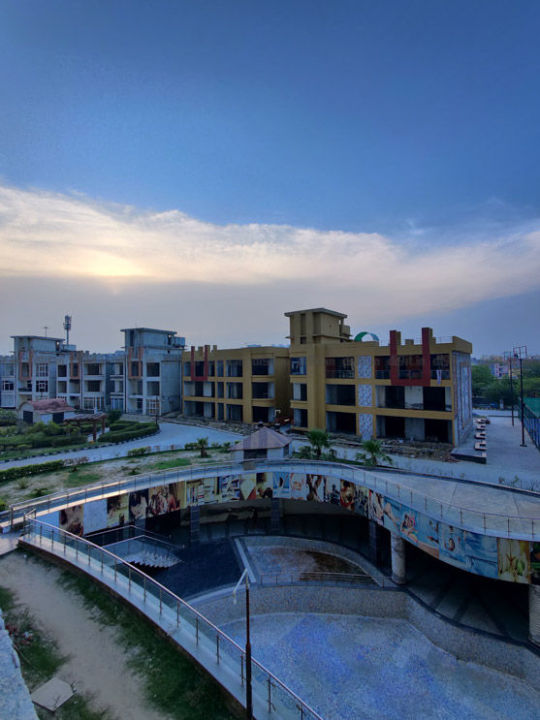
Excessive blue tones is an issue that needs to be addressed.

The area of focus is also quite small, causing issues in taking close-ups Videos from the primary 48MP camera aren’t all that good, especially when you compare against the regular OnePlus 8 and the Mi 10. It takes horribly long to focus on a subject up close and even when you do, it will drop the focus mid-way into the shoot and never recover until you start all over again. It’s a frustrating experience, and it happens at both 1080p and 4K resolution with 60 FPS output. The OIS is good enough for stability but the steady mode was what I used to take a stable video from an e-rickshaw I rode recently. 48MP Ultrawide camera with f/2.2 aperture and 119-degrees FOV. Throughout last year when these high-res sensors kept coming on smartphones cheap and expensive, I wondered what it would take to get the same amount of details from the ultrawide lens. The iPhone 11 series proved it doesn’t have to be treated as a step-child, but the OnePlus 8 Pro made it at par with the primary camera. As a result, you’ll get the best results from this ultrawide lens than from any other Android flagship right now. The 48 MP camera also delivers the best dynamic range in the wide-angle shots, among its peers and this is certainly a welcome addition. Samples below —

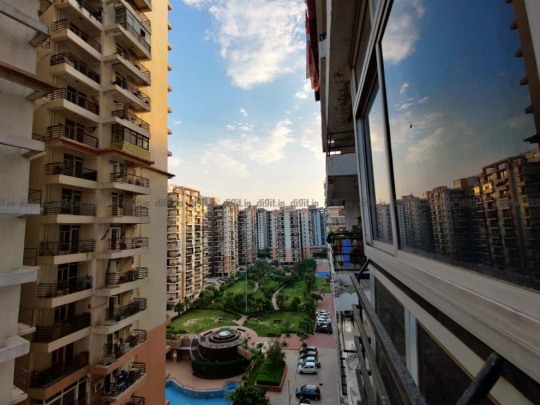
Surprisingly, the 48MP ultrawide lens is better at maintaining focus of a close-up object while taking videos than the primary camera. And if not for the smaller aperture which makes it unusable for videos when the light is low, this is what should have been the primary camera for videos. 8MP Telephoto lens with 3X hybrid zoom and 20X digital zoom The telephoto lens cannot keep up with the level of details you get from the other two cameras. OnePlus combines optical and digital zoom to let you zoom 3X, but details often look broken and full of noise. It lacks the sharpness you get from the other two lenses, and frankly, I used it much lesser than the primary and ultrawide lens. It’s also slightly slower in shutter response, but that’s more or less expected from a telephoto camera.
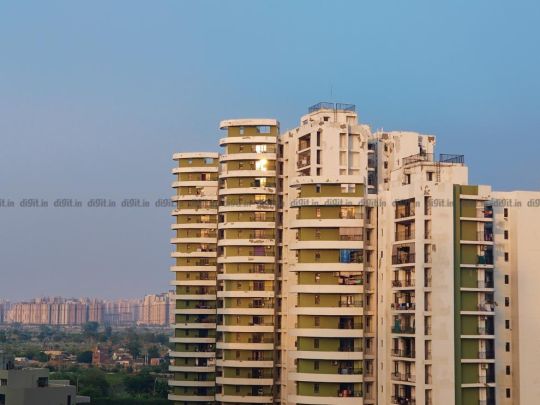

Night Mode OnePlus claims it is using new algorithms for the Nightscape mode for low light photos. But the quality of images you get mostly is the same we saw in the OnePlus 7T Pro with no dramatic improvement. What has improved is the speed at which the phone shoots a burst of photos at varied exposure, and I’d go out on a limb and say the processing is also a bit faster. But still not necessarily better.
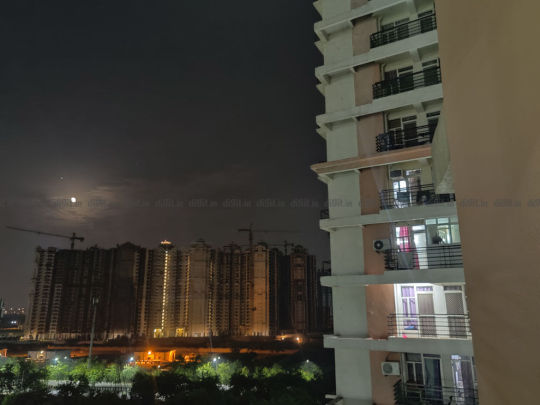
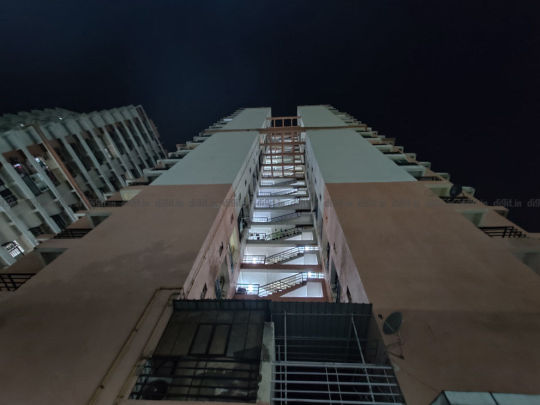
16MP Selfie Camera Being not much of a selfie camera user, I only take a few of them for the review. And it did come out good, with my face looking natural by default. There’s an option to smoothen the details as well. The selfie camera can also take lowlight shots using the Nightscape algorithm, and can shoot 4K videos at 60 FPS. You also get a slow-fie option.
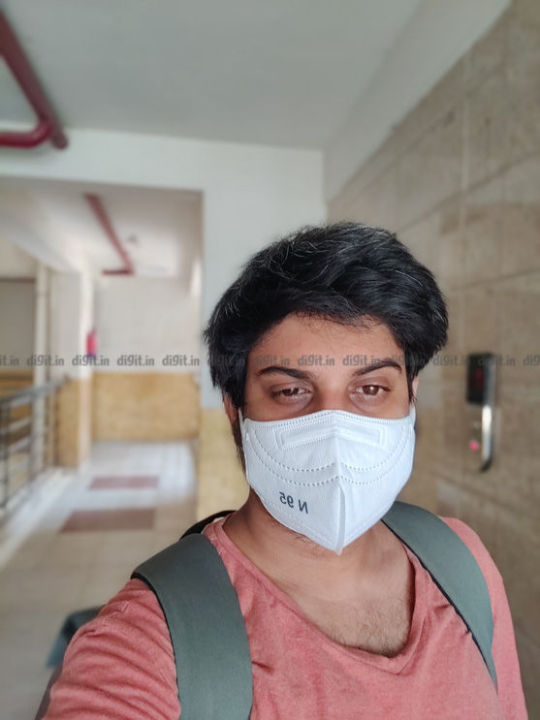
OnePlus 8 Pro Battery Life

I used the OnePlus 8 Pro for about a week as my primary device and the battery life is just about okay. If I am a little frugal in my usage, it can easily last a day. But on days where I’m on my phone all the time, the screen times range around 4-5 hours before it needs a quick refill, at the QHD+ 120Hz setting. It was 4 hours 30 minutes on the first day I set up the phone, downloading and installing all my apps, and restoring my WhatsApp data from the Mi 10 I was using previously. After that, with rounds of benchmarking, using the camera, gaming, back and forth texting and replying to emails, the phone lasted a good 6-7 hours. You can lower the display quality to extend the battery, which is what I’d suggest when you can’t be near a charging point throughout the day. Watching 30 minutes of HDR content on Netflix drains the battery by around 6 per cent while 15 minutes of COD: Mobile drained the battery by around 5 per cent.
OnePlus 8 Pro design and display

The OnePlus 8 Pro looks and feels like the premium flagship it claims to be. And OnePlus has finally included an official ingress rating for the phone. It is IP68 rated but it doesn’t cover water damage under warranty. However, it can easily survive a tumble in the sink or heavy rain. OnePlus has also included another much desired feature - Wireless charging. That too at an unheard of 30W speed, which requires the Warp 30 Wireless Charger sold separately. We didn’t get the chance to test it out yet. The variant we received was the Glacier Green colour, and on this, the company has given a matte finish which reminds me of the Pearl White variant of the OnePlus 6. It’s much slimmer and lighter than before now that the pop-up mechanism is replaced by a punch-hole camera on the display

The 6.78-inch QHD+ AMOLED display covers 90% of the body with very thin bezels on the top and bottom edge. On the side, the screen curves sharper than before, and while I admire the aesthetic, it actually hinders the display experience. There’s significant discolouration around the edges and that becomes apparent in the camera app, or when you’re watching a movie. The colours on the curved parts look different from the flat area. It took me a while to look past that. The panel also has a slightly warmer tinge owing to the DCI-P3 colour space it uses by default. Also the peak brightness only hit 786 lux in our light meter, which is far lower than what we saw on the regular OnePlus 8 and even on the Mi 10. We clocked upwards of 900 lux on them. The minimum brightness is still the same at 6 lux and I did feel my eyes strained while using it before bed.
OnePlus 8 Pro bottomline
The OnePlus 8 Pro ticks all the boxes for a premium flagship this time, and if not for an inconsistent camera performance, it would have been at par with the Samsung and Apple flagships. And that sort of breaks the deal for me because I need a camera that can take photos and videos with consistency for the content we produce on YouTube and Instagram. So if that’s not something you have to deal with, the OnePlus 8 Pro is the easier option to choose between the premium flagships available right now. There’s also the OnePlus 8 which works just as well sans the wireless charging, water resistance, 120Hz at QHD+ display, and a high-res wide-angle camera, which should be the primary reasons to buy this instead of the regular OnePlus 8. Source link Read the full article
#Android#OnePlus#OnePlus8Propriceinindia#OnePlus8Proreview#OnePlus8Prosale#OnePlus8Prospecs#Pro#Review#Slickest
0 notes
Text
Realme X50 Pro 5G
Realme X50 Pro 5G
Review in Hindi: Realme X50 Pro 5G को भारतीय बाजार में February 2020 को 41,999 रूपये में लॉन्च किया गया था। यह एक बेहतरीन स्मार्टफोन है। इसके फीचर्स की बात करे तो इसमें 1080×2400 pixels रेसोलुशन की 6.44 इंच की टचस्क्रीन दी गयी है। साथ ही फ़ोन की स्पीड को तेज करने के लिए 2.84GHz octa-core Qualcomm Snapdragon 865 प्रोसेसर दिया गया है। इसमें 6GB रैम के साथ 128GB की इंटरनल स्टोरेज दी गयी है। इस फ़ोन…

View On WordPress
0 notes
Link
Realme X50 Pro features and Review. Realme X50 Pro 5G is a Very Old Smartphone by realme. It is launched on 24 Feb 2020 in India with a starting price of 38,999 and Goes with higher variant it costs 41,999. It comes with a 5G processor, i.e., snapdragon 865 SoC with 8GB or 12 GB of Ram.
0 notes
Video
youtube
Comparison of Specs,Features review,Price and camera samples of Nokia 8.3 5G vs Realme X50 Pro 5G Smartphones https://digitaltechnologynews.com/ Facebook: https://www.facebook.com/TechNewsTrends/ Instagram: https://www.instagram.com/techspacereview/ *Disclaimer: The scoring is based on numerical specs only and don't include features of cameras,usability,speed or others. All of them are calculated (own score system), not interpreted and do not reflects which phone are better on these aspects. Nokia 8.3 5G #Nokia8.35G #Nokia #8.35G Realme X50 Pro 5G More Here: https://digitaltechnologynews.com/ Tech news
1 note
·
View note
Text
Realme X50 Pro Has Approved at TENAA with Snapdragon 865
Realme X50 Pro Has Approved at TENAA with Snapdragon 865
Recently, a model, RMX2071 of Realme has approved at TENAA, its part of specs have been leaked. According to TENAA, RMX2071 will be powered by 6.44 inch AMOLED with 2400×1080 pixels screen resolution, built in 2,055mAh battery. Maybe the battery information is wrong.
In terms of specs, RMX2071 of Realme has green and red two colors, the dimensions is 159.0×74.2×8.9mm, 205g weight, but TENAA has…
View On WordPress
#OPPO#Realme X50 Pro#Realme X50 Pro Antutu#Realme X50 Pro camera#Realme X50 Pro hands on#Realme X50 Pro review#Realme X50 Pro specs
0 notes
Photo

Realme X50 Pro 5G Review The Realme X50 Pro 5G is one of the few flagship phones that Realme offers. But despite being a newbie, the company did a good job in forging this smartphone.However, it arrived in the Philippines a little late. Powered by a Snapdragon 865 CPU, it wi... https://trendingph.net/realme-x50-pro-5g-review/?feed_id=128964&_unique_id=603602249800b #philippinenews #philippinesnews #pro #realme #review #trendingph #x50
0 notes
Link
0 notes
Text
Some Best Snapdragon 865 Smartphones Available Now
Qualcomm’s Snapdragon 865 chipset can handle almost any task at ease; that’s what makes people crazy about smartphones with a Snapdragon 865 chipset. Here are some best Snapdragon 865 smartphones you can get now.

Samsung Galaxy S20 Series
The Samsung Galaxy S20 series includes four devices with Snapdragon 865 chipset in the US. However, the phones also feature Samsung’s Exynos 990 chipset in Europe and some other regions. All four devices boast 120Hz displays along with wireless charging and IP68 ratings. They offer an in-display fingerprint scanner and expandable storage. You don’t get any headphone jack, so please keep this in your mind. Let’s take a look at the specs of all the four devices in the Samsung Galaxy S20 series.
Samsung Galaxy S20
Samsung Galaxy S20 features a 6.2-inch QHD+ display, 8GB of RAM, 128GB of storage, and a 4,000mAh battery. The device runs on Android 10 and offers a 10MP front camera and three rear cameras of 12MP, 12MP, and 64MP.
Samsung Galaxy S20 Plus
Samsung Galaxy S20 Plus features a 6.7-inch QHD+ display, 8GB of RAM, 128GB of storage, and a 4,500mAh battery. The device runs on Android 10 and offers a 10MP front camera and three rear cameras of 12MP, 12MP, 64MP + ToF.
Samsung Galaxy S20 Ultra
Samsung Galaxy S20 Ultra features a 6.9-inch QHD+ display, 12/16GB of RAM, 128/256/512GB of storage, and a 5,000mAh battery. The device runs on Android 10 and offers a 40MP front camera and three rear cameras of 108MP, 12MP, and 48MP + ToF.
Samsung Galaxy S20 FE
Samsung Galaxy S20 FE features a 6.5-inch Full HD+ display, 8GB of RAM, 128GB of storage, and a 4,500mAh battery. The device runs on Android 10 and offers a 32MP front camera and three rear cameras of 12MP, 12MP, and 8MP.
LG V60 ThinQ
LG V60 is another fantastic Snapdragon 865 smartphone with a 6.8-inch Full HD+ display and a 5,000mAh battery. It runs on Android 10 and features 8GB of RAM and 128GB of storage. It comes with a 10MP front camera and two rear cameras of 64MP and 13MP + 3D ToF.
Oppo Find X2 Pro
Oppo Find X2 Pro comes with a 6.7-inch QHD+ display and a 4,260mAh battery. It boasts 12GB of RAM, 512GB of storage, and of course, Qualcomm’s Snapdragon 865 chipset. It runs on Android 10 and has a 32MP front camera along with three rear cameras of 48MP, 48MP, and 13MP.
Xiaomi Mi 10 Series
Xiaomi MI 10 series includes two devices with Qualcomm’s Snapdragon 865 chipset; Mi10 and Mi 10 Pro. Here are their specifications.
Xiaomi Mi 10
Xiaomi Mi 10 offers you a 6.67-inch Full HD+ display along with a 4,780mAh battery and Android 10 support. It boasts 8/12GB of RAM, 128/256GB of storage, a 20MP front camera, and four rear cameras of 108MP, 13MP, 2MP, and 2MP.
Xiaomi Mi 10 Pro
Xiaomi Mi 10 Pro offers you a 6.67-inch Full HD+ display along with a 4,500mAh battery and Android 10 support. It boasts 8/12GB of RAM, 256/512GB of storage, a 20MP front camera, and four rear cameras of 108MP, 20MP, 12MP, and 8MP. It’s understandable an excellent smartphone, but it would be better if it had a 5,000mAh battery.

Sony Xperia 1
Sony Xperia 1 comes with a 6.5-inch 4K display and a 4,000mAh battery. It offers you 8GB of RAM, 256GB of storage, an 8MP front camera, and three rear cameras of 12MP, 12MP, and 12MP + ToF. The device runs on Android 10. It features a side-mounted fingerprint scanner and an IP68 rating.
Sony Xperia 5
Sony Xperia 5 comes with a 6.1-inch 4K display and a 4,000mAh battery. It offers you 8GB of RAM, 128/256GB of storage, an 8MP front camera, and three rear cameras of 12MP, 12MP, and 12MP. This one also runs on Android 10. It features a side-mounted fingerprint scanner and an IP68 rating.
Despite all the above mentioned Snapdragon 865 smartphones, you can also go for Asus ROG Phone 3 Strix Edition, OnePlus 8T, OnePlus 8 Pro, Motorola Edge Plus, Poco F2 Pro, Realme X50 Pro, Red Magic 5G, and Asus Zenfone 7. Please read the buyers’ reviews as well before buying any of the smartphones mentioned in this article. Thank you!
Mia Watson is a creative person who has been writing blogs and articles about cybersecurity. She writes about the latest updates regarding McAfee and how it can improve the work experience of users. Her articles have been published in many popular e-magazines, blogs, and websites like mcafee.com/Activate.
Source: Some Best Snapdragon 865 Smartphones Available Now
0 notes